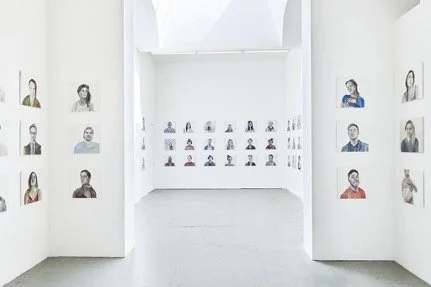Pretty in pixels
When we think of how we present ourselves to others in today’s world – the first thought that jumps to mind is probably our online presence. The internet is a space where we can choose what is shared about us and how, creating usually a ‘best’ version of ourselves that is acceptable for all to see, to promote the things we like or are proud of about our lives. This is an alter ego. It’s a reduced version of ourselves that boasts the good things and leaves out the rest. An alter ego is something that most people are therefore likely to have unconsciously. This tension between our online and offline lives is something that fuels creatives to explore this relationship we have with ourselves and how we present to others.
One of the reasons that we may choose to present ourselves in a way and rely on our ‘alter ego’ is the rise of online dating in the past century. It’s become the norm to meet on dating sites and apps and it’s more of a shocker to people when you let them know you met in person for the first time. Therefore, our profiles on dating sites are in the spotlight. This is something that South Korean artist Jiyeon Kim explores in her ‘Tinder Project’ (2017). In this project, Kim drew 100 portraits of Tinder users from their profiles, exploring the way they wished to present themselves. The portraits are all on plain white backgrounds – drawing focus to the image that the users have chosen to draw attention to themselves. When displayed together the pieces are reminiscent of a tv talent show headshot wall – where judges are to pick the most eligible to be in showbiz – a competition of the alter egos. Kim states on her website that “Overall, ‘Portraits of Tinder’ artistically addresses different questions and associations on the way we present ourselves, (…) human interaction.”
Selfies are everywhere, and often how we record where we travel. The selfie is another way of controlling how we look and are perceived. We are taking our trust away from the camera and instead demanding we can see how we look so it’s a ‘good’ photo, linking into our unconscious need to promote our ‘better self’ alter ego. This is something that was explored in an exhibition at the Saatchi Gallery in 2017 in the exhibition ‘From Selfie to Self-Expression’. The exhibition featured work from a range of diverse artists such as well-known artists like Tracey Emin to emerging artists. Huwaei, famous for its tech and most notably, it’s smartphones, presented the exhibition which explored the history of the ‘selfie’ and emphasised the emerging importance of the smartphone as a tool for artistic self-expression. The exhibition went as far as to display portraits of famous artists such as Vincent Van Gogh and Frida Kahlo in digital frames where you could ‘like’ the image as if on Instagram. As visitors browsed the gallery – they were also watched by cameras which unpredictably zoomed in and moved around to showcase visitors on screens. There was also a wall showcasing hundreds of selfies to take a selfie in front of. The whole exhibition feeds into the conversation around how we present ourselves in our conscious outputs, the selfies we share and how this differs from our realities.
What is evident from the Tinder profiles project and the Selfie to Self-expression exhibition is that our unconscious focus on how we are perceived through what we put out online about ourselves is changing how we present ourselves to the world. We’re eager to get that ‘like’ and the validation that what we have put out is ‘good’. We’re racing to share images that tell people who we are, and we’re all slowly feeding our digital alter egos without realising, one post at a time. With the rise of Artificial Intelligence and the Metaverse where we can be anything we like, modern social media is teaching us to seek being ‘pretty in pixels’ and to step away from our IRL selves.




